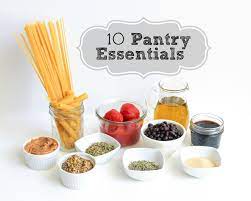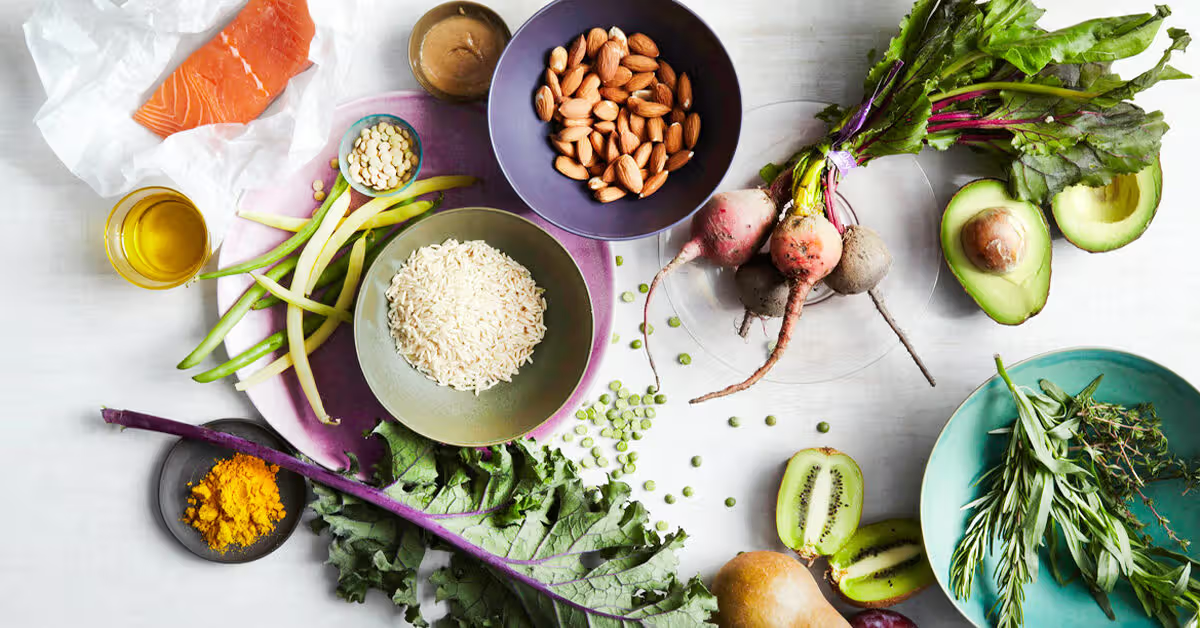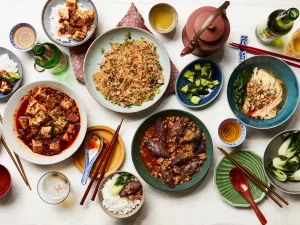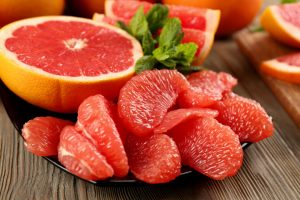Navigating Food Decisions With Type 2 Diabetes

Navigating Food Decisions With Type 2 Diabetes
Navigating Food Decisions With Type 2 Diabetes
Managing your type 2 diabetes through your diet doesn’t have to be difficult! Follow our tips for making the best food choices.
When type 2 diabetes is diagnosed, one of the first things people ask is, “What am I supposed to eat now?” This question doesn’t have to be hard to answer. Here’s a quick guide:
- Stick to the ‘ideal plate’. Try to have a dinner plate that’s divided into a quarter for protein, carbs, and non-starchy veggies.
- Don’t worry about special meals. People with type 2 diabetes don’t need to buy special foods or cook for themselves. There are plenty of healthy and delicious recipes out there that everyone in your family can enjoy.
- Encourage healthier options. Make a family decision to not stock unhealthy foods at home. This may seem like a tough decision at first, but it’ll benefit everyone in the end. If there are any dietary restrictions in your home, a few simple modifications can make all the difference.
Also Read: Pizza Toppings Tips
The Pantry Content Guidelines For Navigating Food Decisions With Type 2 Diabetes
Discard
Eating foods that are high in calories but low in nutrients, such as potato chips and buttery crackers; cakes, biscuits and chocolates; candies; rich dressings; cheeses; white bread and croissants; brioche; and white rice (except for basmati) should be avoided, as well as high-fat, low-fiber cereals and ice cream.
Retain
Eating foods that are beneficial for your health include:
Cereals that do not need to be toasted and have more than 7 grams of fiber per 100 grams, such as bran, rolled oats or muesli.
Dried legumes (such as sweet corn, tomatoes, beetroot, etc.)
Canned legumes (e.g. chickpea, lentil, chili beans)
Heart-friendly oils (e.g., olive, sunflower oil)
Nuts and seeds
Freeze frozen veggies, lean meats, poultry or fish.
Add some flavor to your meals by using lesser amounts of different Asian sauces, such as low salt soy sauce or oyster sauce (for example).
Sweet chilli sauce
Fish sauce
Mirin sauce
Purchasing Guidelines
Top 10 Pantry Essentials For Navigating Food Decisions With Type 2 Diabetes

1. Canned Legumes Like Chickpeas, Lentils, Cannellini Beans
These legumes are high in fiber and low in calories, making them a cost-effective and filling option. You can make a simple hummus using pureed chickpeas (or cannellini beans) mixed with garlic and lemon juice. For extra texture and protein, you can also use drained chickpeas in soups and curries.
2. Canned Fishes Like Tuna, Salmon, Sardines
These fish, which are high in protein and high in omega-3s, are ideal for adding to your lunchbox with a salad or a piece of bread. Choose from the spring water-canned varieties or opt for the oil-drain versions.
3. Canned Tomatoes
These tomatoes are rich in lycopene and can be used in a variety of dishes. The flavored tomatoes make great sauces for meat or legumes.
4. Pumpkin Or Sunflower Seeds
These roasted seeds add a rich, crunchy flavor to a variety of dishes.
5. Balsamic Vinegar
Balsamic vinegar, also known as balsamic acid, is an all-natural marinade, dressing, and sauce ingredient that does not contain any calories.
6. Nuts and Nut Butter
They add texture, flavor, and crunch to your food, while also providing heart-healthy fats.
7. Fish Sauce
This is a great addition to Asian dressing and stir-fried sauces. Due to the high sodium content of this product, it should be diluted with water or used in smaller quantities than suggested in the recipe.
8. Seeded Mustard
It can be used as a dipping sauce on bread, as a dressing for salads, as a seasoning on lean meats, or as an accompaniment to almost any meal.
9. Dried Chili Flakes
These heat-tolerant flakes can add a touch of flavor to your favorite soups, casseroles and sauces.
10. Low-Salt Soy Sauce
This sauce is a great way to add flavor without adding too many calories.
Also Visit My Technology Site>
Top 10 Fresh Must-Haves
When it comes to a healthy pantry, fresh vegetables and fruits should be at the top of your list.
Non-starchy vegetables are a great way to add flavor and volume to your diet. Plus, they’re packed with nutrients to help keep you healthy.
However, be careful about adding starchy vegetables to your diet, as they should only make up 25% of your healthy plate.
1. Leafy Greens
For example, baby spinach or mesclun salad mix. Packed with essential nutrients, these greens are perfect for enhancing your meals. Incorporate at least a handful of greens into your daily diet for optimal health.
2. Fresh Herbs
Fresh herbs are a great way to add flavor without increasing calorie intake. For instance, fresh basil pairs beautifully with tomatoes, and coriander complements a wide variety of Asian dishes.
3. English Cucumber
With its low calorie content, this cucumber is an excellent choice for salads, sandwiches, or platters. Easily create a low-calorie dip by grating the cucumber and adding a touch of garlic and salt to thick, low-fat plain yogurt.
4. Tomatoes
Tomatoes are a valuable ingredient, providing both flavor and nutrition. They can be incorporated into a variety of dishes and serve as an excellent addition to your pantry. Enjoy a slice paired with cottage cheese on a rustic cracker or combine them with refreshing cucumber and feta cheese cubes for a Grecian salad vibe. One of the benefits of tomatoes is their lycopene content, a powerful antioxidant associated with reducing the risk of prostate cancer.
5. Bananas
Enhance the sweetness of your morning cereal by adding slices of banana. They are a convenient snack to have at your workspace or in your vehicle for when hunger strikes. Considered one of nature’s premier quick foods!
6. Kiwi
Rich in vitamin C and fiber, a kiwi can be a delightful, naturally sweet finish to a meal. Consider slicing a kiwi and pairing it with a dollop of yogurt and a sprinkle of muesli for a refreshing after-dinner indulgence.
7. Blueberries
Exceeding many fruits and vegetables, blueberries are abundant in antioxidants. The intense blue color of the berries originates from anthocyanins, antioxidants known to support brain health.
8. Chicken Breasts
Lean and nutritious, skinless chicken breasts rank among the leaner meat options. While they may be a bit more costly, a small portion can go a long way, particularly in a satisfying stir-fry.
9. Tofu
Although tofu may not have a distinct flavor, it seamlessly melds with the tastes of the accompanying ingredients, resulting in a delightful dish.As a protein-rich soy product, tofu fits seamlessly into stir-fry meals as a protein substitute.
10. Falafel
For health-conscious individuals, falafel offers a nutritious fast food option. Made from ground legumes such as chickpeas or fava beans, falafel is easily accessible in most supermarket deli sections.
Top Picks for Your Refrigerator and Freezer
1. Frozen Baby Green Beans
These are a convenient standby for when your fresh vegetable supply runs low. Add a handful to curries, stir-fries, or casseroles for a nutritious last-minute boost.
2. Trim or Calci-Trim Milk
Choosing trim or Calci-Trim milk, which is identified by its green or yellow top, over full-cream milk with a dark-blue top, supports a healthier intake of kilojoules and saturated fat.
3. Low-Fat Greek Yogurt
When you desire creaminess but aim to maintain a balanced kilojoule intake, reach for a cup of this yogurt.
4. Tomato Paste
Tomato paste in tubes has a lasting shelf life and is a great choice for a low-calorie pizza sauce or as a flavor booster in dishes centered around tomatoes.
5. Parmesan Cheese
Although high in concentrated flavor, only a small amount of Parmesan cheese is needed. Sprinkle it lightly over Italian dishes or use it to enhance the taste of low-fat cheese.
6. Curry Paste Jars
Add a tablespoon or two of curry paste to cooked chicken or fish for an explosion of flavor with minimal calorie content. Combine with reduced-fat coconut milk, but be mindful of the sodium levels.
7. Jars of Minced Ginger and Garlic
While fresh ingredients are preferred, these jars provide convenience when time is limited. They elevate the flavors of your dishes without adding many calories.
8. Whole Grain Bread
Store a loaf of high-fiber bread in your freezer. This way, you can easily control portion sizes by taking out only as many slices as needed.
9. Caper Jar
Lush in flavor and low in kilojoules, capers make scrumptious additions to pasta sauces, pizzas, or salads.






